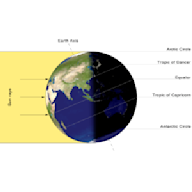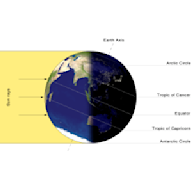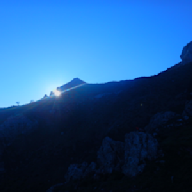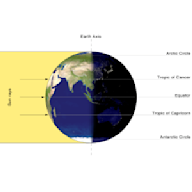Search results
The summer solstice occurs during the hemisphere's summer. In the Northern Hemisphere, this is the June solstice (20, 21 or 22 June) and in the Southern Hemisphere, this is the December solstice (20, 21, 22 or 23 of December).
Astronomical summer begins at the summer solstice, which is the longest day of the year. This means days get shorter during summer—very slowly at first, but at ever-larger daily intervals as the September equinox approaches, heralding the start of fall.
May 17, 2024 · The summer solstice heralds the start of astronomical summer in the Northern Hemisphere and marks the day with the most daylight for the year. But what's the science behind the longest day and...
Sep 26, 2022 · The summer solstice marks the official start of astronomical summer and the longest day of the year. It occurs when one of Earth's poles is tilted toward the sun at its most...
The summer solstice—also called midsummer—has long been recognized and often celebrated by many cultures. Egyptians built the Great Pyramids so that the sun, when viewed from the Sphinx,...
5 days ago · Summer solstice, the two moments during the year when the path of the Sun in the sky is farthest north in the Northern Hemisphere (June 20 or 21) or farthest south in the Southern Hemisphere (December 21 or 22). Learn more about the summer solstice in this article.
Aug 10, 2017 · The summer solstice is the longest day of the year, and the shortest night. In the Northern Hemisphere it takes place between June 20 and 22, depending on the year. In 2024, the summer...
Jun 20, 2024 · What is the summer solstice? Here’s what you need to know. Once a year, an astronomical alignment ushers in this seasonal change. The solstice is celebrated across the world—and shrouded in...
The June solstice marks the start of summer in the Northern Hemisphere and the start of winter in the Southern Hemisphere, according to one definition. Equinox and solstice dates—years 1-2149. Sunrise and Sunset Times Lag Behind. The longest day of the year is commonly associated with the earliest sunrise and latest sunset of the year.
Jun 20, 2024 · Solstice, either of the two moments in the year when the Sun’s apparent path is farthest north or south from Earth’s Equator. In the Northern Hemisphere the summer solstice occurs on June 20 or 21 and the winter solstice on December 21 or 22. The situation is exactly the opposite in the Southern Hemisphere.





